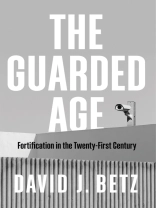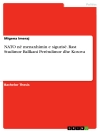The fall of the Berlin Wall in 1989 came to symbolize the dawn of a new era of openness and connectivity. Yet today, the world is ever more divided, demarcated, and – quite literally – fortified. We are living in a guarded age.
Why and how has this happened? Where will it take us? In this book, David J. Betz explores the expansion of fortified physical infrastructure at every level of the global political economy. In cities, where security is increasingly ‘designed in’ to public buildings and spaces as they are reshaped to mitigate mass terror attacks. Within corporations, who are burying their electronic assets in deep underground caverns and behind the leaded walls of ex-nuclear war bunkers against a range of threats and feared contingencies. In many urban areas, where the default condition of civil life is to be walled, gated, watched, and guarded. Year after year, hundreds of miles of linear obstacles – walls, ditches, and watchtowers – are added to national borders. Practically everywhere you look there are signs of innovative fortification, often designed to be overlooked. The Guarded Age reveals the barriers which most have observed but few – until reading this book – have truly seen.
สารบัญ
List of Figures
Preface
Introduction
1 The Rise of the Walls
2 Civilisation, War, and Guardedness
3 Contemporary Military Fortification
4 Storming the City
5 Securing the City
6 Hiding in Plain Sight
7 Luxury Forts to Data Bunkers
Conclusion
Further Reading
Notes
เกี่ยวกับผู้แต่ง
David Betz is Professor of War in the Modern World in the Department of War Studies, King’s College London and a Senior Fellow of the Foreign Policy Research Centre. He has written four books, most recently
Carnage and Connectivity: Landmarks in the Decline of Conventional Military Power (OUP), and dozens of chapters and articles on problems of contemporary strategy and warfare. He regularly advises governments and armies on a range of issues including cybersecurity, counterinsurgency doctrine, strategic communications, and future warfare.












